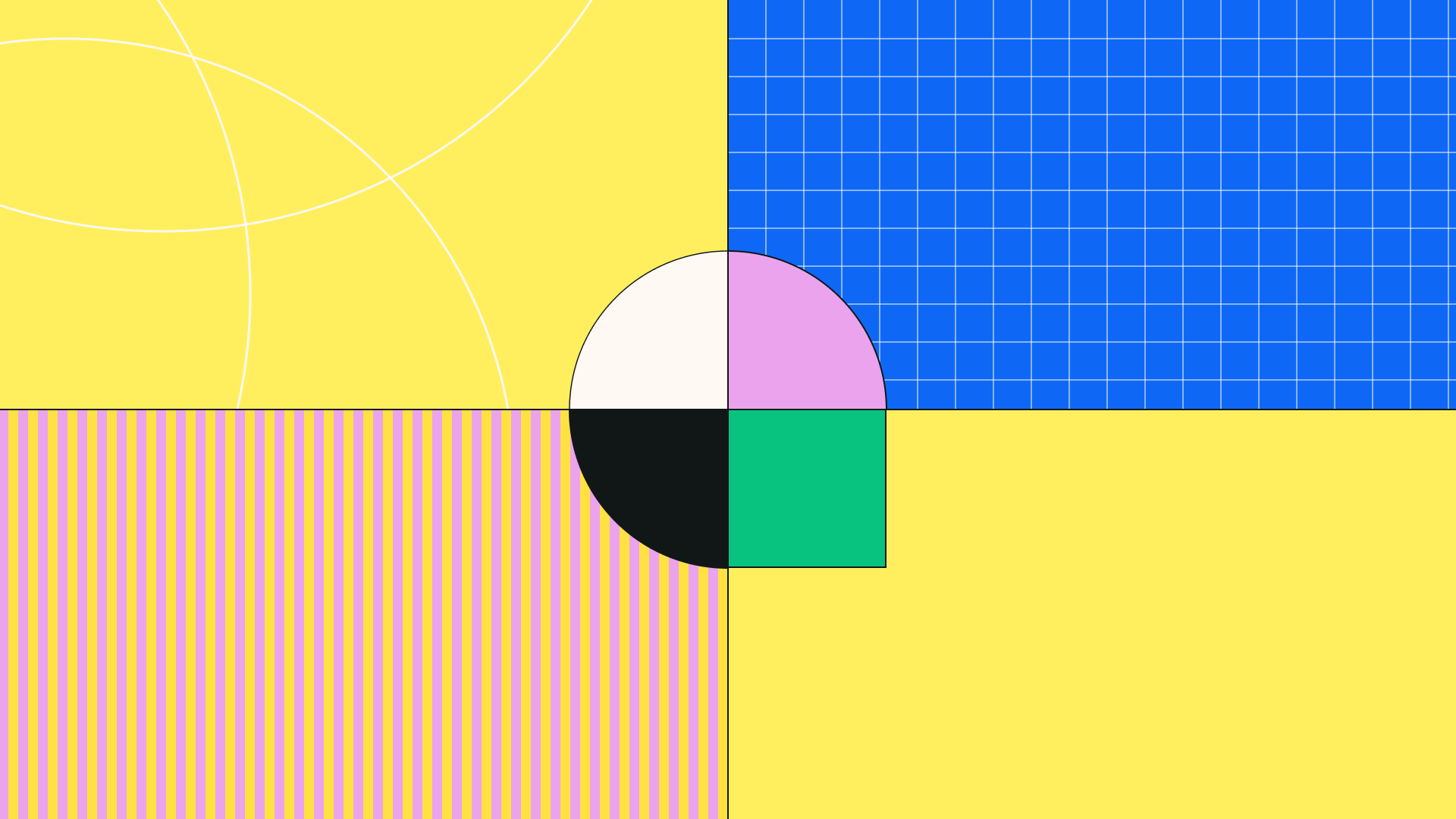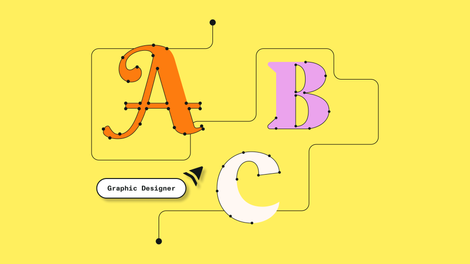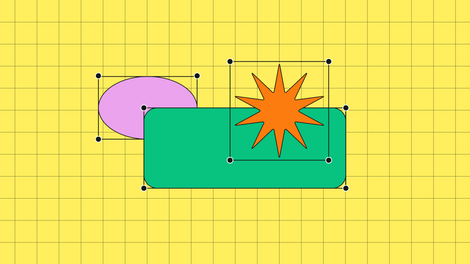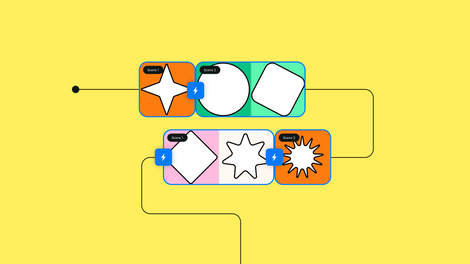Over 5 million people sell to 88 million active buyers on Etsy—one of the leading online customer-to-customer (C2C) marketplaces (Etsy 2022 Results).
This ecommerce platform reportedly holds almost half the non-USA global market share (GMS).
Illustration and crafting are growing markets.
But some artists and illustrators feel the online creative market is flooded and are exploring other avenues for selling custom prints and digital artworks online.
We wanted to learn more about how freelance illustrators sell art online today, so we interviewed three talented creatives.
Jumpstart your ideas with Linearity Curve
Take your designs to the next level.
Four questions, three artists
Meet Nastya, Georgia, and Nina.
Nastya Kuliábina is a designer and educator who loves to share her knowledge with creatives and encourage them to explore digital art. Instead of selling original artworks online via NFTs or print on demand, she uses her graphic design skills to make high-quality digital brush sets that help digital creatives achieve better results. She's based in Barcelona, Spain.
Georgia Salisbury (AKA Geoberri) is a freelance illustrator and graphic designer. A recent BA (Hons) Illustration graduate, she loves exploring nostalgia, magical realism, and storytelling in her work. She plays with these concepts using ink, digital illustration, and textiles. She's based in London, United Kingdom.
Nina van Rijn (AKA Studio NinaNina) is a content writer and illustrator living in Ouderkerk aan de Amstel – a small village that's a 20-minute bike ride from Amsterdam, Netherlands. She holds BSc in Social Geography and Urban Planning and MSc in Sustainable Development degrees. She's traveled Europe in a converted van, hiked in Patagonia, and currently works in Cape Town, South Africa.
We asked these professional artists four questions on what to sell, where, and for how much. And we got down to the nitty-gritty: the channels that don't work for them and whether customers must sign any paperwork.
Interview questions:
- What kinds of art do you sell online, and how do you prepare your illustrations?
- What marketing and distribution channels do you use and why? Have you tested any channels that didn't work for you?
- How do you decide on pricing, handling payments, packaging, shipping, and insurance?
- Is there any specific documentation that your customers must sign?
Let's see how we can learn from their experiences as individual artists.
What types of art to sell online
Nastya sells custom-designed brushes for digital painting in the Procreate app.
These brushes are specifically designed for digital artists and designers. She creates various styles to suit different applications: sketching, shading, and texturing.
This is Nastya's creative process:
- Start with an idea for a digital brush.
- Find inspiration: search online, take photos, etc.
- Turn images into patterns or design vector patterns.
- Play around with textures and settings to get the desired effect.
- Import the texture to Procreate and turn it into a brush.
- Test new brushes out on several illustrations.
- Improve as needed.
- Export files onto a computer when the brush pack is ready.
- If the files are too large, compress them into a .zip folder.
- Upload it to WeTransfer.
- Prepare a PDF file with a download link.
Georgia makes a wide range of products depending on the art market demand.
For art prints and three-dimensional products, she recommends starting with good photography. When turning non-digital illustrations into digital files, high-quality scanning and polishing up in photo-editing software like Photoshop is key.
She ensures high image quality for printing by keeping the resolution at least 300 dpi.
Her last step is to send the files to a professional printing company specializing in artist prints.
Nina most often creates digital illustrations for websites. She makes brand designs, UX/UI images, and editorial illustrations to bring websites to life.
Her illustrations are also sold as art prints and birthday calendars.
She delivers her files in different formats depending on their application. If the client's web developer needs access to the various design elements, she sends them in the design software's format. Otherwise, she sends the final designs as .png or .svg files.
What marketing and distribution channels to use
All three artists have experimented with various marketing tools and online marketplaces to reach potential buyers. They shared their favorite online platforms with us, pointing out a few that didn't work well for them.
Channels that have worked well:
- Etsy*
- Gumroad
- Direct sales
* Has worked well for Nastya
Channels that haven't worked so well:
- Affiliate marketing
- TikTok
- Etsy**
- NFTs
- Online shop
** Hasn’t worked well for Georgia
In Nastya's experience, the most effective marketing channels for her digital brushes are social media platforms, Etsy, and Gumroad. Instagram and YouTube are her favorite social media platforms to use as a marketing channel, because these enable her to connect directly with her client base.
She provides much more than brushes: she shares her experiences, artworks, and helpful tips for digital artists.
As a result, social media enables her to build long-term relationships with her followers. This drives sales and creates happy customers.
When selling digital products, you need a platform to process the payments and deliver the files. In her opinion, Etsy is one of the best ways to solve this. Etsy has millions of engaged customers, and they're all interested in creative and custom products.
Two networking marketing channels that haven't worked well for Nastya are affiliate marketing and TikTok.
Affiliate marketing is when someone else promotes products or services and earns a commission fee on each sale generated. She tried promoting her brushes on specific Instagram accounts in the Procreate niche but didn't see any results.
Bring Your Artistic Vision to Life with Linearity Curve
Transform your creative ideas into stunning artwork. Discover how Linearity Curve’s powerful tools can help you craft beautiful, detailed illustrations with ease.
TikTok helped her gain extra visibility and views. But after over a year of using this social media platform, she found that it doesn't support building long-term relationships and engaging an audience. The number of sales she made through this platform was lower than via other channels.
Georgia uses Instagram to market her work. She's currently focusing on establishing a platform for herself and building a following.
In the past, she experimented with selling on Etsy. Unlike Nastya, she feels that Etsy charges hefty fees and is saturated with thousands of artists selling similar products. It’s hard to stand out, make sales, and earn a profit.
Nina's most important sales channel is social selling via Instagram and LinkedIn.
She receives illustration commissions on Instagram and copywriting inquiries on Linkedin. Her posting frequency on Instagram has a direct impact on her online sales.
She also runs an online gallery of her work, but potential customers often contact her for direct sales. She's started experimenting with NFTs, but hasn't seen any notable impact yet.
How to set your online art price
Pricing is often a challenging process. Nastya's pricing methodology is based on the following criteria: comparing competitors' prices and pricing experimentation.
When deciding on a selling price, she analyzes her competitors' prices and looks at the products from the customer's perspective. She observes how competitors have positioned themselves. She notes the existing listings in her niche and checks the price range (minimum, maximum, and average).
Then, she defines her pricing based on the average market price. Running pricing experiments helps her find the highest conversion rate: testing different pricing strategies (cheap, medium, expensive) to find the most prosperous one.
When selling physical artwork, the cost of materials must be taken into account.
Georgia considers material and time costs but tends to undervalue her time and undersell her work. But she acknowledges that competitively pricing her work makes a full-time career in the creative industry much more viable.
She was selling handmade earrings targeting a younger audience who generally have less to spend. Knowing she could sell her pieces to people who appreciated them, she decided to take a loss sales-wise.
Like Nastya, Nina also looks at other illustrators to choose a fair price. But, like Georgia, she admits that her biggest challenge is asking the price the work is worth.
For Nina, pricing is the hardest part of being a freelance illustrator and copywriter. She finds talking about money awkward, especially when working for people she knows.
Her payments are handled either via the payment portal on her website or invoices sent once the work is done.
She puts high effort into her packaging: she always boxes her prints in a beautiful and secure way using high-quality materials. The most important thing is keeping the artwork safe during shipping, plus adding nice wrapping paper to improve the customer's unboxing experience.
MoUs and other customer documentation
We asked the illustrators if their customers must complete any paperwork, like a Memorandum of Understanding (MoU) or similar document.
Freelancers and illustrators tend to be positive and trusting when starting a new project. But it's crucial to put your and your customer's expectations on paper to ensure projects start and finish well.
Nastya's brushes are sold as digital downloads. They have an automatic commercial license when someone purchases them. This means they can use her brushes for commercial illustrations (client work, print-on-demand, etc.).
The commercial license includes limitations: her customers aren't allowed to resell her brushes on other platforms. Consequently, her customers don't need to sign any documentation. They simply download, install, and start enjoying her brushes straight away.
Ready to create brand assets that pack a punch?
Visit our Academy for free illustration design courses.
When Georgia sells pre-existing work, such as limited edition prints, customers aren't required to sign any documentation. With certain commissions, she may ask clients to sign a contract to make sure she's being paid fairly for the amount of work and the time it will take.
Nina prefers to work based on trust and doesn't use contracts or any other documents. She also doesn't require a down payment before commencing a project.
Time to get started
Illustrators are experimenting with selling different types of products in digital art marketplaces.
From design brush sets and website illustrations to birthday calendars and earrings, independent artists have many opportunities to thrive creatively. We’ve seen that some freelance creatives also tend to undervalue and undersell their work.
Art buyers aren't only hanging out in physical art galleries—they're on Etsy, Instagram, and other creative online platforms. And they're looking for high-quality decorative artworks and art products.
Nastya, Georgia, and Nina have given us insight into what works for them. The most important thing to remember is that you need to experiment and find what works for you.
We recommend that illustrators and designers, especially when starting out, should look at themselves as a business. To attract customers that value you and your work, you need to charge appropriately.
Often, low prices are interpreted as low quality or fast turnaround. If this isn’t what you want to offer, then you need to change your pricing.
Consider the following points before deciding on pricing:
- How much do your monthly expenses amount to? This is the minimum amount you need to earn to cover your living costs.
- How many billable hours do you work per month? Divide your cost of living by your monthly billable hours to get your minimum hourly rate.
- Is your hourly rate too high? Consider cutting costs or finding a passive income.
- Is your hourly rate too low? For instance, designing a logo may take a few hours but could be worth much more. Consider itemizing your billing and setting standard prices for certain projects, such as logo design, corporate banners, t-shirts, etc.
- How long will the project take? If you expect a big project to run over a few months, then you must work out a down-payment schedule. Not only will this keep you and your customer accountable to project deadlines, but it’ll also ensure that you don’t run out of funds before the project is completed.
All relationships are built on trust, but sometimes the lines of communication get crossed. To avoid misunderstandings and unmet expectations, we recommend setting up MoUs. These agreements stipulate the customer’s expectations and what you expect in return.
Have you discovered some tried-and-tested strategies you want to share with other artists and illustrators? Send us your tips and artwork on social media and our Community—we may even ask to interview you next.
Jumpstart your ideas with Linearity Curve
Take your designs to the next level.
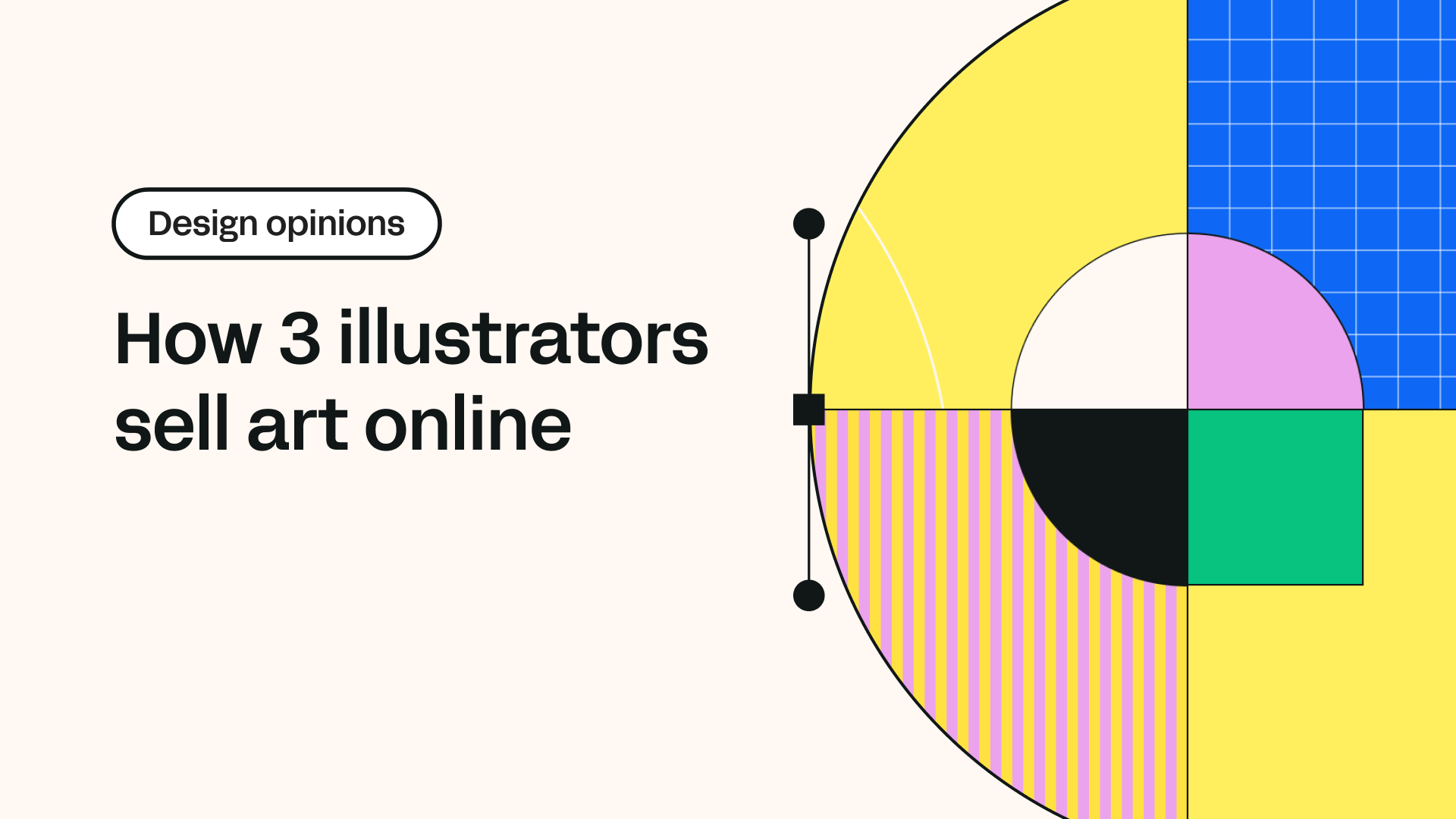
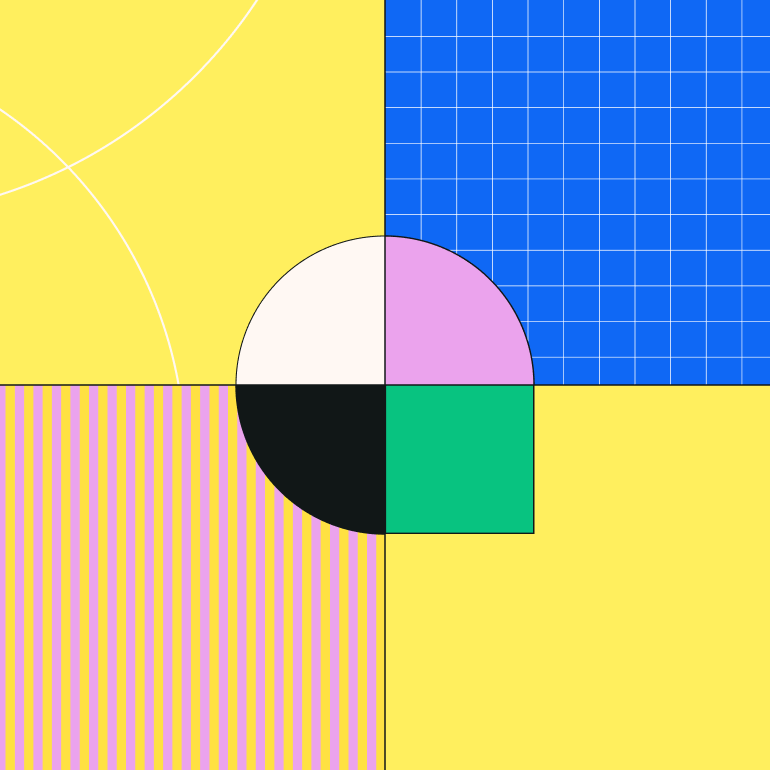
Share this!
Sharné McDonald
Sharné is a contributing writer to the Linearity Blog. She has 10+ years' experience in graphic design and marketing and holds a Master's degree in Art Education.


:quality(75))
:quality(75))



:quality(75))
